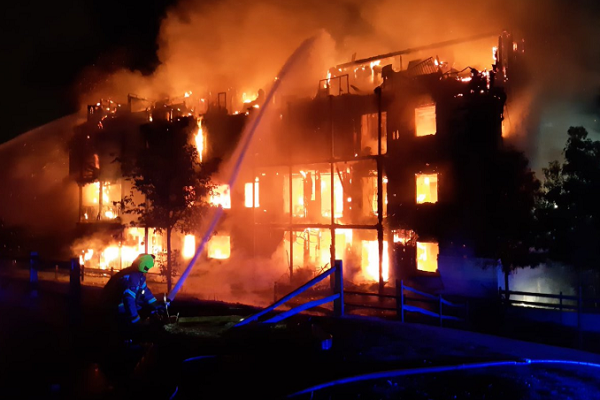You are viewing 1 of your 1 free articles
Scottish council suspects RAAC concrete used in 500 homes
Potentially dangerous concrete is suspected to have been used in hundreds of homes on an estate in the Scottish city of Aberdeen, according to the council.
The local authority has written to residents of 500 properties on the Balnagask Estate in the south-east of the city, to explain that reinforced autoclaved aerated concrete (RAAC) was “likely to have been used” when the estate was built.
Aberdeen identified the material on the 1960s estate during a city-wide review of its 22,000 properties following growing concern over the safety of the concrete, a lightweight building material used between the 1950s and 1990s.
More than 100 English schools have recently either partially or fully closed due to fears over the risks of RAAC, which is weaker than standard concrete and more prone to collapse because of its “bubbly” construction.
It has also been found in 30 Scottish schools, and after a desktop survey of its estate, in February NHS Scotland issued a safety action notice warning that RAAC could be present in more than 250 of its buildings.
Aberdeen City Council picked up on the presence of the material in Balnagask using desktop studies, and the council said it will now conduct visits to all the properties to confirm if RAAC is definitely present.
If it is found, the authority will then conduct further detailed inspections to determine its condition, original construction detail and other relevant technical assessments. An action plan will then be drawn up with residents.
A council spokesperson said: “More than 22,000 council homes in Aberdeen are currently being reviewed for the presence of reinforced autoclaved aerated concrete, a lightweight building material used between the 1950s and 1990s.
“Although Aberdeen City Council is not expected to have many homes built with RAAC, the council is already working with independent structural engineers to inspect council properties to determine if RAAC is present and whether further investigations are needed.”
“Work to date has established that RAAC is likely to have been used in around 500 properties in Balnagask. Today the council has written to these residents and owners on the next steps.”
Lightweight and cheap, RAAC panels were widely used in UK construction from the mid-1950s to the 1980s, and were often used in public buildings with large flat roofs such as hospitals and schools.
The material differs from normal dense concrete as it has no coarse aggregate and contains air bubbles, meaning it is not as strong and is more vulnerable to collapse or “crumble” when it nears the end of its shelf life.
In 2017, failure of the material was linked to a ceiling collapse in a Kent primary school and in September around 140 schools across England were either partially or completely closed because of concerns over the risk of RAAC.
So far the safety crisis has been limited mainly to schools and some hospitals, however an expert consultancy warned in August that “urgent thorough inspections” are needed to establish the extent of use of a crumbling form of aerated concrete in the UK’s social stock.
The English regulator has since said it understands that RAAC is not widespread in social housing. However, it has said landlords should know whether their homes contain any material components.
The regulator also said that landlords need to develop a plan for mitigation and remediation where required.
Last month Clive Betts, chair of the Levelling Up, Housing and CommunitiesCommittee, asked minister Lee Rowley for an update on the risk of RAAC in social and private housing, including what the Department for Levelling Up, Housing and Communities’ latest guidance is for affected residents and landlords, and whether there are plans to update this.
A spokesperson for the Scottish Housing Regulator said: “We are currently working with the Scottish government to share information with social landlords on the risks arising from the presence of RAAC in buildings and to gather better information from landlords on its presence in social housing.”
Sign up for our Scotland newsletter
Already have an account? Click here to manage your newsletters












